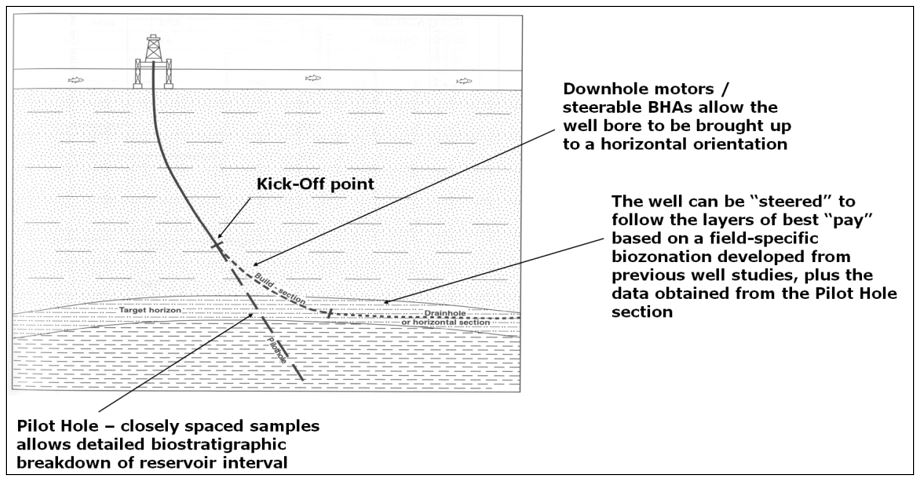This is an old revision of the document!
Table of Contents
Biosteering
Many reservoirs are best exploited by “horizontal” production wells, as far more of the exposed well bore can be located within the reservoir than can be drilled with “conventional” vertical/subvertical wells. In structurally simple reservoirs it is often enough to set up the wellbore aligned to the correct trajectory and simply drill ahead. However most reservoirs are either structurally more complex, or have internal subdivisions which display variable petrophysical parameters which require either targeting or avoiding. In such cases it is required to frequently change the drilling trajectory in order to remain within the optimum part of the reservoir (sometimes called “chasing the reservoir”).
As part of the practical considerations, it is common to have two wellsite biostratigraphers at rigsite during these kinds of production wells as 24-hour coverage may be required. Each biostratigrapher works an alternate 12-hour shift until drilling is complete. In some circumstances it may be that each biostratigrapher is an expert on different fossil groups to provide as wide a paleontological dataset as possible. This is a situation common in the horizontal drilling strategy of many chalk fields in the North Sea (for example).
Prior to drilling a horizontal production a “pilot hole” may be drilled to provide an opportunity to closely evaluate the vertical distribution of fossils through a reservoir and the rock units both above and below it. Samples can be collected over a closely-spaced interval and a detailed distribution chart can be constructed. This enables individual reservoir units to be “fingerprinted” with a characteristic set of fossils contained within it, together with “marker species” which help to define it.

The basic components of a horizontal production well. With greater familiarity of the field, fewer (if any) pilot holes may be needed.
